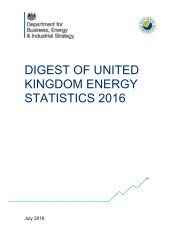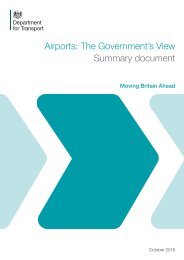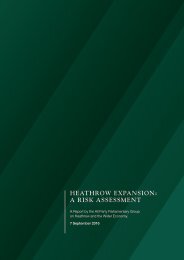20131211-2013.12Reports
20131211-2013.12Reports
20131211-2013.12Reports
Create successful ePaper yourself
Turn your PDF publications into a flip-book with our unique Google optimized e-Paper software.
Southend Radar had identified the A319 using Mode-S and had confirmed that no unknown<br />
returns were present on his radar display; replay of the radar recording of the incident supports<br />
this. The A319 was vectored initially on a heading of 350° for right base to RW06, between 2<br />
other transiting aircraft that were identified and receiving a service. Southend Radar then turned<br />
the A319 left by 15° onto a heading of 335°. The A319 was provided with a Deconfliction Service;<br />
the normal deconfliction minima that ATC seek to achieve from unknown traffic are 3000ft<br />
vertically or 5nm laterally. However, because the paramotor was neither known, nor showing on<br />
the radar display, ATC intervention was not possible and the A319 pilot was not given any<br />
warning of the conflicting traffic - it was not possible for the controller to pass either traffic<br />
information or avoiding action on an aircraft that was not being presented on the radar.<br />
Stoke microlight site is near to Southend and, within 45 minutes of the Airprox, Southend ATC<br />
had spoken to the owner, who confirmed that they had no para-gliders or para-motors based<br />
there, and nothing had yet flown from them that day.<br />
The radar recording was analysed and, whilst several intermittent primary contacts could be seen<br />
over a long time-scale, none of them could be correlated with the A319 pilot’s report. The Unit<br />
asked their technical staff and the radar manufacturer to investigate the performance of their radar<br />
with a view to improving its performance against small targets.<br />
The Radar Manufacturer reports that the paramotor was probably detected for a short period of<br />
time at the raw-radar plot data level, but that it was probably too small to be detected consistently<br />
by the radar. In order to reduce false radar returns produced by clutter, the equipment has a<br />
tracker filter, which removes raw-radar plots having a speed of less than 40kt. It is likely therefore<br />
that the raw-radar plot data did not generate a track on the radar display due to the low detection<br />
rate cause by the paramotor’s very small radar cross-section and its low speed.<br />
Southend Unit Recommendations:<br />
Recommendation 1: Southend ATE should re-engage with the radar manufacturer to see if any<br />
further optimisation of the PSR elements of the radar can be done to enhance chances of<br />
detection of very small/slow targets, particularly in areas of known Airprox concern.<br />
Recommendation 2: Southend Airport continues to seek to obtain CAS as soon as possible in<br />
order to provide better protection for aircraft flying instrument flight procedures into and out of<br />
Southend.<br />
Recommendation 3: Southend Airport to ask regular commercial operators to re-iterate to their<br />
pilots operating at Southend that not all smaller/slower targets will be detected by modern radar<br />
systems.<br />
[UKAB Note 1: These recommendations are not necessarily the view of the UK Airprox Board].<br />
CAA ATSI reports that they had access to Southend RTF, area radar recordings, together with<br />
the written reports from the Southend controller, ATSU and A319 pilot. The A319 was operating<br />
an IFR flight inbound to Southend Airport and was in receipt of a Deconfliction Service from<br />
Southend Approach.<br />
The paramotor was untraced, very likely operating VFR, and not in receipt of an air traffic service.<br />
At 0835:03, the A319 was 13.1nm south-southwest of Southend Airport. The A319 pilot contacted<br />
Southend Radar and reported descending to 3000ft on a northerly heading. The controller passed<br />
traffic information regarding a PA28, co-ordinated at 2000ft in the A319’s 1 o’clock at 2.5nm. A<br />
Deconfliction Service was agreed, and the A319 pilot reported visual with the traffic. The A319<br />
was then turned left onto a heading of 350°.<br />
2







